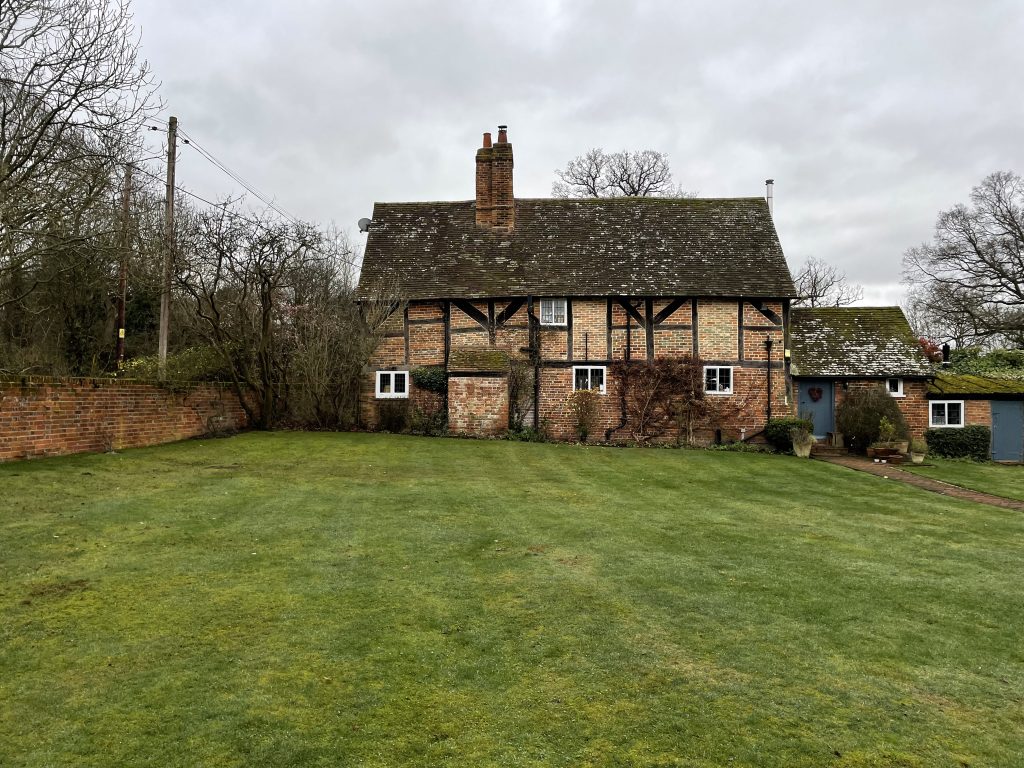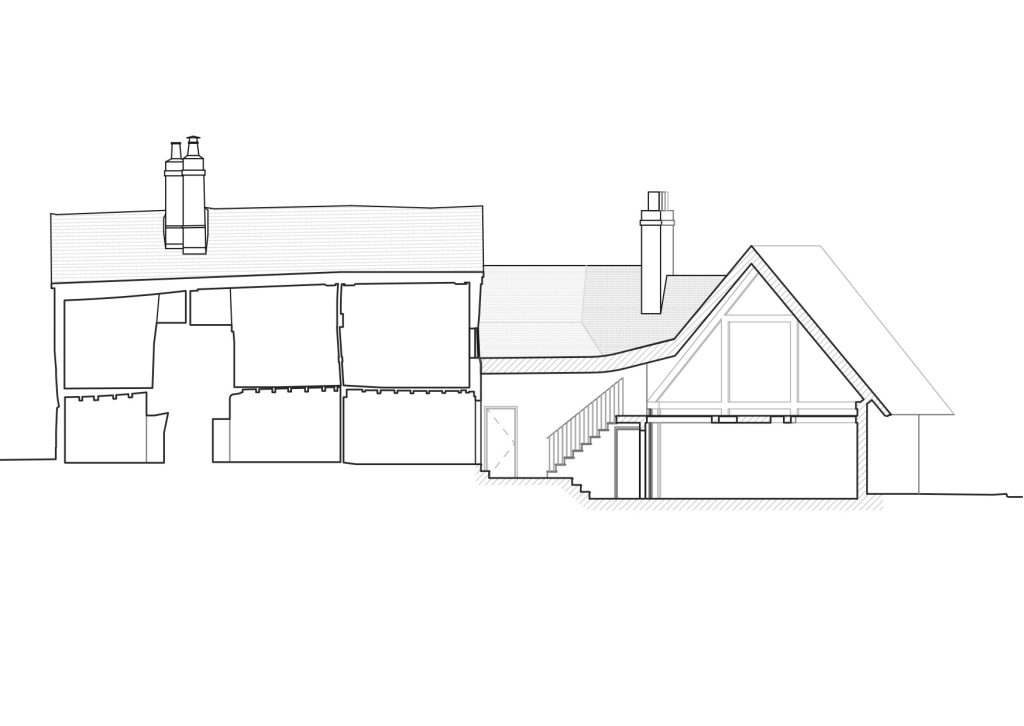Consent Granted for ‘Modern Barn’ Extension to Listed Farmhouse
We have received listed building consent and planning permission for a revised extension to a Grade II listed farmhouse in Aldermaston, Reading.
We initially received consent for a similar scheme in 2019, but following several design iterations application for a new consent became necessary. The revised scheme includes an exposed timber post truss structure internally, with a glazed gable elevation looking out upon the North Wessex Downs Area of Outstanding Natural Beauty. We were able to negotiate an increase in volume, height, and glazing with West Berkshire Council to maximise the design quality and investment return for our client.
The house itself is a charming traditional timber frame farmhouse with a large plot of land and several smaller outbuildings within its curtilage. We are also in the process of converting one of these buildings into a small residential unit, and involved in the construction of a new stable yard on the site.
The existing building, while of high architectural and historic value, has very poor thermal performance and low levels of light and tight, cramped spaces. Our extension, which is comprised of two distinct ‘wings’, provides a relief from these smaller spaces and a far higher standard of environmental performance. The intention is that the large ‘barn’ space is bridged to the original house by an intermediary, semi-historical extension which was carefully negotiated in terms of heights and style with the planning authority, aided by our heritage consultant Jon Lowe Heritage.





